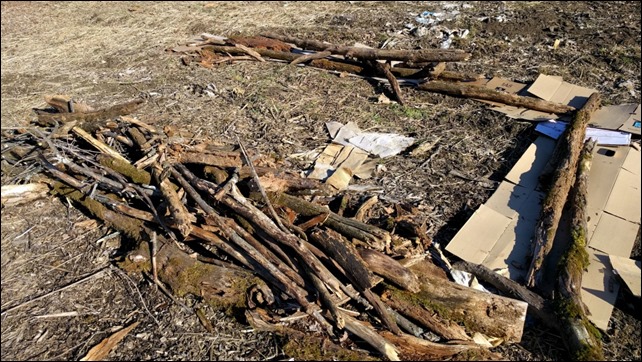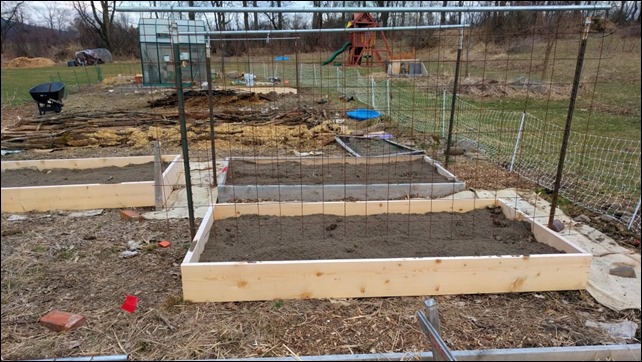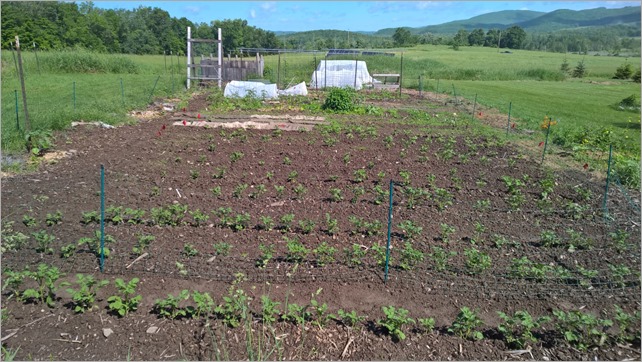Well, as usually I’ve gotten crazy busy this summer (even work has taken a turn recently) and haven’t blogged about progress as much as I wanted. To set the stage, we’ve had a super dry and hot summer here in Vermont. Almost the polar (or should that be solar) opposite of last year. As is the nature of all gardening, you adapt from the previous year and get a different year. The good news is hugelcultur and permaculture are built for adaptation. The raised beds on the other hand can get a bit dicey if there isn’t enough moisture. We’ve definitely had to do some irrigating.
I’ve added some soaker hoses into the mix in addition to our overhead sprinklers. Ideally I would love to just do drip-style watering, but it’s a big pain to get set up and particularly with our winters, trying to do anything permanent is probably going to just lead to frustration. Even if you attempt to blow out and drain everything. That being said, soaker hoses are cheap enough that I’m experimenting with laying them down once and just leaving them in place. This seems to work particularly well if I run a hose along the top of a hugelcultur mound, so I’m going to keep experimenting.
Anyway, the main point of this post is I want to show the crazy growth on our main hugelcultur mound with some before and after pictures.
Here is the main mound on the 4th of July.
Here is the mound as of this morning. The crazy growth in the back consists of a couple of tomato plants, some tomatillos, basil, beans and maybe a pepper plant.
Here is a closer view
And here is a view from the side
In other news, here is what happens when you plan too much stuff in a raised bed with stuff that likes to grow up and everything starts getting happy together.
If you want to see additional unedited pictures of our garden this year, hop over to this gallery.

























